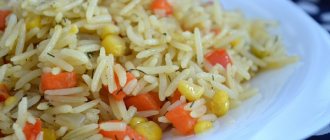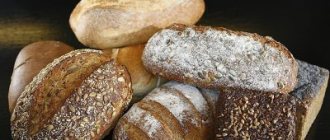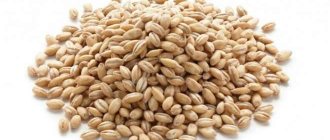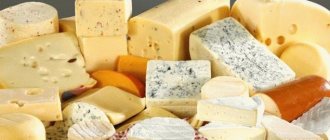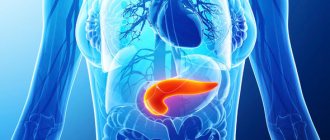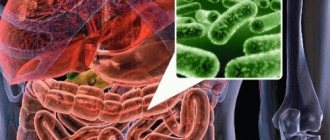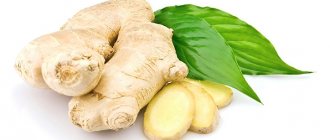It is difficult to imagine a daily diet without baked goods. However, not everyone can eat bread. Patients diagnosed with pancreatitis must constantly adhere to a certain diet so that the disease does not worsen. What kind of bread can you eat with pancreatitis and in what quantities?
In the diet of patients with pancreatitis, bread should be present in the amount of 100-300 g per day (depending on the phase of the disease). Doctors do not recommend overusing baked goods, otherwise a recurrence of inflammation of the pancreas is possible.
What bread to choose for pancreatitis?
A wide variety of bakery products are presented on the shelves of modern retail establishments. Therefore, patients suffering from pancreatic disease often cannot figure out what they are allowed to eat, and which types of bread and other flour products are best avoided.
Let's consider an approximate list of types of bread allowed for consumption in the presence of an inflammatory process in the cavity of the parenchymal gland:
- white varieties of bread,
- inconvenient pastries,
- loaves baked from rye flour,
- bran varieties of bread products,
- whole grain breads,
- breads.
It is important to remember that freshly baked bread, despite its appetizing appearance and aroma, should not be consumed.
This is due to the fact that still warm bread contains too high a concentration of starch and yeast-type fungi, which have a negative effect on the stomach, provoking the onset of fermentation in it, and also contribute to the formation of an uncomfortable condition in the intestinal cavity. Therefore, even if a child suffering from this pathology asks for some warm bread, he should be protected from this, as from a potential danger of exacerbation.
But, as for dried bread, experts note its positive effect on the processes of the digestive tract during the development of pancreatic pathology. This is due to the fact that it contains vitamins and mineral components that help accelerate the processes of assimilation of food products and maximum saturation of the entire body.
White bread
All baked goods are excellent sources of protein and carbohydrates. In most cases, white bread or a loaf is introduced into the diet of many patients, providing the body with valuable components and the necessary energy reserves.
A pancreatic attack that occurs against the background of a progressive stage of cholecystitis, diabetes mellitus or any pathological process in the cavity of the gallbladder is usually relieved by applying cold, hunger and complete rest. Hunger must be observed for 2-3 days, after which the patient’s diet gradually begins to include dishes from the list of permitted food products that are not capable of causing irritation of the mucous surfaces of the parenchymal gland, one of which is white bread. It is better to start introducing bread into your diet with one that is baked from first-grade flour, which contains a minimum concentration of fiber and other components that have an irritating effect on the mucous surfaces of the gastrointestinal tract.
From the moment when an acute attack of pancreatic pathology is eliminated, it is necessary to eliminate as much as possible the possibility of irritation of mucous surfaces. Against this background, at the first stage of introducing food products into the diet, you should avoid consuming:
- whole grain bread,
- bakery products with added bran,
- rye bread.
In the case when pancreatic pathology enters the stage of stable remission, a small amount of white bread will not be superfluous in the patient’s diet. And in order to prevent the exacerbation of the disease and not be afraid to consume it, it is recommended to dry it a little in the microwave, oven, or naturally.
For pancreatitis, it is recommended to eat homemade bread prepared in a slow cooker, bread maker, or in a conventional oven, and not purchased in a store.
Rye flour bread
With the development of pancreatic pathology, rye bread is most preferable, since it contains a minimum concentration of starch and calories, so it is more quickly absorbed by the digestive system.
But it is worth noting that the composition of a freshly baked product of this variety is dominated by a small concentration of acids, which affect the taste of this product, giving it a slightly sour taste. Moreover, these acids have a negative effect on the gastrointestinal system. Therefore, after eating freshly baked rye bread, you often experience a feeling of heartburn or heaviness in the abdomen. Excessive consumption of hot, freshly baked rye bread can cause the development of gastritis. It should also not be eaten in fried form.
In order to eliminate the negative effects of acids, it is better to eat bread made from rye flour in the form of crackers. Crackers for pancreatitis will not cause any damage to the pancreas if consumed in moderation.
It is also worth noting that modern bread manufacturers use various additives in the cooking process in the form of raisins, dried apricots, and various dried fruits. Such products should not be chosen if pancreatic disease develops, since with this pathology it is allowed to eat only regular bread products without any additives.
Bran bread
During the period of stable remission, it is necessary to use baked goods prepared with the addition of bran very carefully. This is due to the fact that bran additives are considered rough food that is not amenable to digestion processes in the gastrointestinal tract. Bran also enhances peristalsis both in the intestinal cavity and in the stomach cavity. The load on the parenchymal gland increases, which should not be allowed if it is affected by inflammatory pathology.
In order to reduce the negative impact of the bran product on the digestive system, it is recommended to cut it into small pieces before use and dry it until it becomes a cracker. These crackers can be eaten at a time no more than 3-4 pieces in combination with first courses.
Wholegrain
Whole grain breads are no less healthy than rye bread. And moreover, this type of grain bread does not increase the level of acidity of gastric juice, since its composition simply does not contain components such as acids.
Its use is limited due to the content of coarse fibers, through which the introduction of this product into the patient’s diet should be carried out with the utmost caution, just like the introduction of bran bread.
It is not recommended to consume more than 200 grams of whole grain bread per day. and only in the form of crackers.
An equally important aspect is the absence in this product of various additives used to improve taste, which may include raisins, dried apricots and other types of dried fruits that are not recommended for pancreatic damage to the parenchymal gland.
Pita
Lavash is allowed to be consumed for pancreatitis, as it is one of the varieties of white bread. But you need to eat it in small quantities, carefully listening to your body. Armenian lavash should be prepared several days before use and dried well. You are allowed to eat no more than two hundred grams of this product per day, in several doses.
Beneficial features
The benefits depend on the composition and method of preparation; ordinary bread is a high-calorie carbohydrate product and contains:
- B vitamins;
- Beta carotene;
- Vitamin A;
- Vitamin E, PP;
- A large number of microelements important for metabolism (calcium, magnesium, phosphorus, iron, iodine, zinc and others).
Due to the wide variety of products, you can find certain types enriched with folic acid, high iodine or iron content.
With pancreatitis, it is necessary to control the calorie intake, so when adding bread to the diet, it is important to correctly calculate the amount of carbohydrates in a meal so as not to overstrain the pancreas.
Bread menu for exacerbation and remission
Bread
Many patients ask the question: “Is it possible to eat bread if you develop pancreatitis?” Undoubtedly, this type of bread product is an excellent alternative to all types of bakery products.
Diet breads are prepared from wheat flour. The following are used as additives when baking bread:
- rice additives,
- oat or rye flour,
- or buckwheat flour.
Moreover, in stores you can find bread with added bran.
With the development of pancreatic disease, this product can replace the daily intake of regular bread. The breads are suitable for first courses, they can be used in preparing salads, and you can also prepare a dessert dish from them, greasing them with a small layer of natural honey.
Contraindications
Cases in which the consumption of bread in any form and quantity is contraindicated:
- Acute phase, period of complications, serious condition of the patient;
- Concomitant diseases, in particular diabetes mellitus. In this case, the contraindication is relative, but the recommendations for use are completely changed;
- Other diseases for which the diet does not allow the consumption of bread products;
- Contains contraindicated additives and sugar in the product;
- Overweight and obesity, metabolic syndrome;
- Warm, freshly prepared butter bread;
- Reduced stomach acidity;
- Increased acidity, in particular for rye varieties.
Crackers and bagels
It is recommended to introduce these products into the patient’s diet upon the onset of a period of stable remission. Crackers should not contain:
- no flavorings,
- taste improvers,
- preservatives and dyes,
- dried fruits,
- vegetable fats.
Bagels, or bagels as they are also called, are one of the best types of bakery products recommended to enrich the patient’s diet. They do not contain prohibited additives and are perfect for consuming with fermented milk products or with a tea drink. Another excellent alternative to bread is drying for pancreatitis.
It is important to remember that these products must be consumed in moderation, otherwise they can become the root cause of constipation and the further development of dysbiosis. Moreover, dry bagels and dryings must be pre-soaked so as not to irritate the mucous surfaces in the stomach.
It is recommended to prepare crackers at home by simply cutting any pastry without special additives into small slices and drying them in the oven for 45-60 minutes, constantly making sure that they do not burn.
Is it possible or not?
Whether you can eat bread for pancreatitis depends on the severity of the enzyme deficiency of the gland.
There is a wide variety of baked goods, as well as many recipes for making your own bread.
Since ancient times, flour products have been considered the main element of the energy value of the diet, so not a single meal can be done without it. Medical tables restrict people with pancreatitis from certain foods, including various types of bread.
This is due to the difficulty of the pancreas in secreting enzymes to digest the starch in the composition.
Those types of rich products containing a minimal amount of starch and made without the use of yeast are allowed to be consumed during an exacerbation. So, crackers and dried bread are allowed in the first weeks of the acute period.
Contraindicated dishes
Cooking at home
Crackers can be purchased at any retail outlet, but it is preferable to make your own at home. This will provide an opportunity to be sure that the structure of the crackers is natural and does not contain any harmful substances.
For this, it is best to use homemade bread. It is prohibited to prepare crackers from buns and whole grain products that contain seeds, raisins, prunes, dried apricots, and cereals.
The bread should be cut into slices, the thickness of which should be no more than 1-1.5 cm. They should be placed on a baking sheet and covered with foil or baking paper. Place in a preheated oven for 15-20 minutes. When this time has elapsed, do not remove the pan from the oven, but leave it for another 30 minutes. After cooling completely, the crackers will be ready.
Features of use
If you have glandular diseases, you should eat crackers with caution and outside the period of exacerbation. It is necessary to chew the product thoroughly until a paste forms in the mouth. This will help facilitate the digestion of the product, since digestive processes begin in the mouth.
Note! It is necessary to eat crackers for pancreatitis in moderation, starting with one cracker per day.
In acute form
In acute pancreatitis, the patient must be on a fasting diet for several days. This is required for the reason that it is necessary to remove the load from the pancreas and reduce the intensity of inflammation.
In the chronic form of pancreatitis, the patient’s diet must include dry bread. This will help provide the human body with the required nutritional components. In addition, such a product is healthier than fresh bread and other bakery products.
During an exacerbation of the disease, a person must follow a strict diet. For this reason, not only fresh bread, but also crackers are prohibited during this period of time.
During remission
When the exacerbation has passed and remission has occurred, when the patient’s condition has completely stabilized, the person can use a more expanded diet. During this period, the consumption of crackers is not prohibited.
